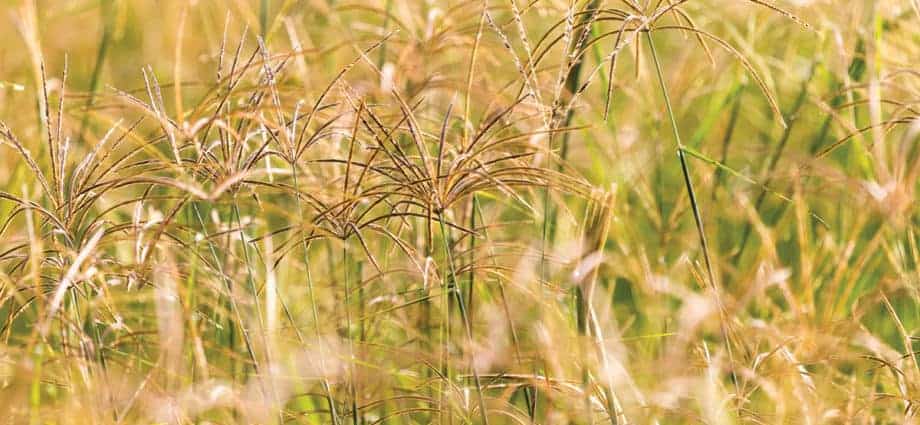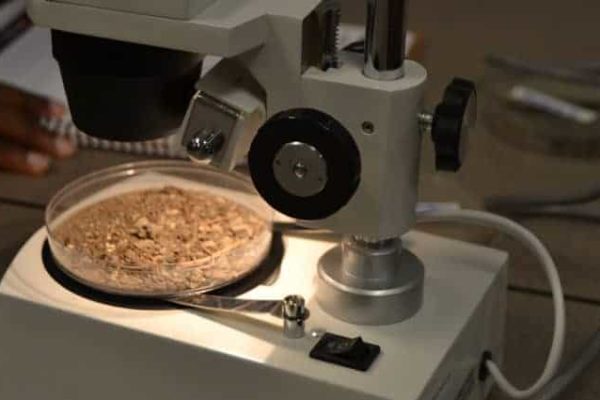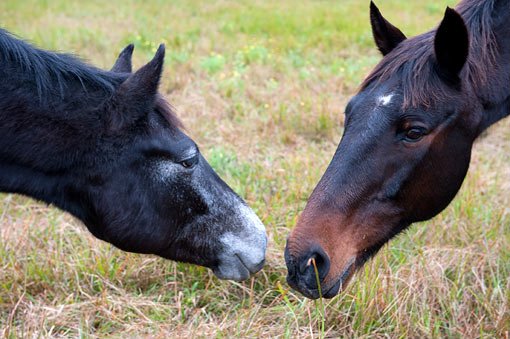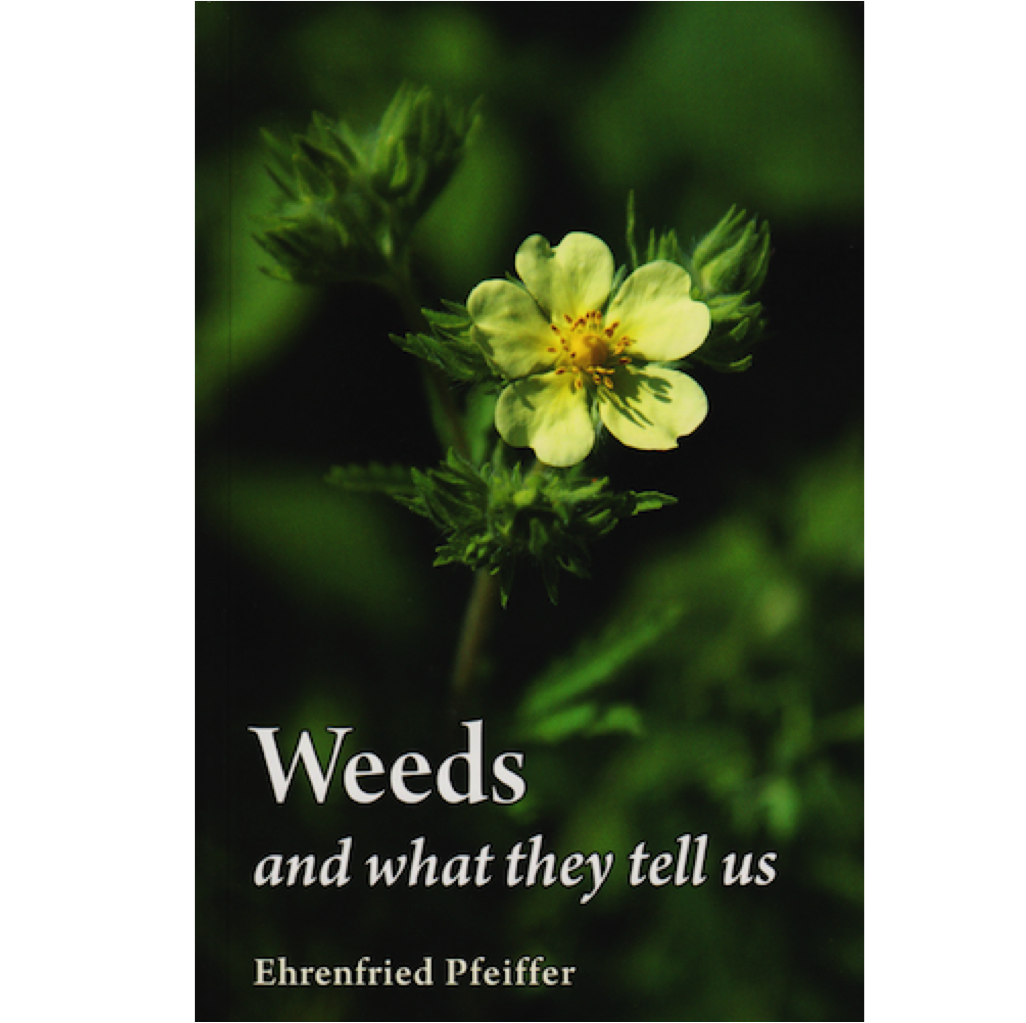In this All About Soil series, we have been ‘digging deeper into soils’ and explored what soils are, how soil is formed, the different types of soil (Part 1) and how they sustain life through the soil-food-web (Part 2).
We learned about sampling and DIY home soil tests (Part 3), which allowed us to get a first glimpse of what our soils are doing or not doing! To get a more detailed profile and a quality check of our soils, we explained the importance of soil lab testing and what the results may tell us (Part 4).
So far, we have gathered a lot of soil information, but this is of little use if we are not implementing it on our properties. Even though soil tests results may vary from place to place in the same paddock, and between seasons (when sampled at the same point), we can still use them as a general reference and help guide us in developing our soils.
In this, the last part of this series, we will explain how these test results can assist you in your soil and pasture management on your property and, specifically, what tools and materials may be required in order to improve the nutrients and health of your pastures.
Evolution of soil tests and modern agriculture
Soil tests are often used in conventional farming as an explicit directive of the required inputs for crops or pastures (what fertiliser, seeds and chemicals to add), and inform on their potential yield. Agronomists interpret these lab results and inputs, and make recommendations to improve the soil and pasture. This is known as ‘prescription’ agriculture or farming, and it has been very effective in increasing yield and mass food production around the globe. Unfortunately, it has often resulted in a loss of overall soil health, particularly a loss of soil carbon.
Over time, prescription farming has become a more streamlined process and has evolved into precision farming. Incorporating ‘smart technologies’, along with modern GPS/rate controlling equipment, has led to more fine-tuning of seeding prescriptions, nutrient application and pest/weed control.
Using precision farming via GPS, the farmer has the ability to locate their precise position in a field, allowing for the creation of maps of the spatial variability of as many variables as can be measured by sensor technologies (for example, crop/pasture yield, terrain features/topography, organic matter content, moisture levels, nitrogen levels, pH, EC, Mg, K, and others.
Using this technology, the old lab soil tests may seem redundant and, to a certain degree, this may be the case for large production farms moving fully to these types of precision farming layouts.
Nevertheless, for accuracy and to get a greater profile of your soils status, the ‘old-school’ lab tests will always play a role and also allow for accurate calibration of these sensor technologies.
In addition, even with precision farming technology, it will be impossible to quantify the microbiological health of soils – we still require laboratory analysis, including DNA tests, to identify bacteria, fungi and protozoa species. Keep in mind soil biology (the soil-food-web) has been understudied compared to the above ground biology, yet it is vital for the health of our crops, pastures and forests (as discussed in Part Two of this series). This highlights the importance of close human observation of soil quality and dynamics at the soil-food-web level.
Permaculture and soil tests
Permaculture prioritises the restoration of soil health because healthy soils produce healthy plants and grasses, which, in turn, help produce healthy crops and animals.
Permaculture, as well as other organic/alternative farming principles, approaches soil health from an understanding of fundamental ecosystem processes, with special attention to soil microbiology and closed system management.
Soil tests are essential in permaculture and, initially, the approach is to use DIY tests and observations. Soil lab testing is typically used as a follow-up tool after the initial observations to obtain a more complete picture of the nutrient availability, contaminations in certain regions of the farm and, specifically, to check the microbiology profiles of soils.
Lab results can also be used as a starting reference, but often, visual and DIY testing alone make it obvious the soil is in poor condition. It is more likely, therefore, that lab soil tests are used during the soil development phase to identify improvements when different strategies and inputs have been adopted.
Permaculture and other organic farming principles work on supporting and enhancing natural ecosystem processes to improve soil and pasture health. There is a main focus on close system management techniques and reducing the need to use/import fertilisers (especially chemical-based products) and pesticides, or even totally eliminating these products.
When we talk about closed system management, it is important to realise, within an ecosystem, a number of fundamental processes play a role in the recycling of nutrients, including:
- The water cycle,
- The mineral cycle,
- The community dynamics (i.e. the relationship between organisms in the ecosystem), and
- The energy flow.
In a natural system, many species of plants and animals play a role in these processes (See Part Two of this series). However, on horse properties, the manager (which is you!) is responsible for overseeing the animals and returning waste (via compost or mulch) to the soil and plants.
Actively creating soil in pastures becomes the property owner’s role, whereas in nature, many other processes and species carry out that function. In permaculture, the intent is to actively support these fundamental processes by using systems and species that can actively restore soil (providing they are not locally rampant and invasive).
Soil issues and how to fix them using the Permaculture approach
As a landholder, you will encounter many soil (and pasture) issues, but some are more common than others, especially on horse properties and, in this article, I focus on the three most common issues you may have identified either through your DIY tests or soil lab analysis.
1. Soil organic matter
In your lab soil tests, this will be mentioned as estimated soil organic matter (OM), which is a surrogate for soil carbon and is measured as a reflection of overall soil health. Levels of soil OM are measured/estimated by soil testing for soil organic carbon (SOC), as soil OM is composed of approximately 60% carbon.
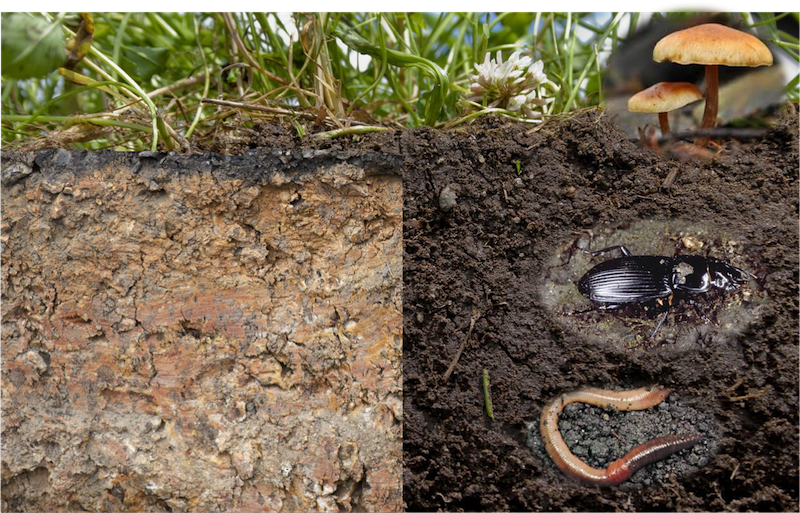
Organic matter results from partly decayed plant and animal residues in various degrees of decomposition. Soil OM matters for several reasons. First, soil OM holds up to 90% of its own weight in water, so it acts like a giant sponge. Soil scientists have found a one percentage point increase in soil OM can increase the soil’s water holding capacity by 75,000 to 100,000 litres of water per acre, which is nearly one acre-inch of water going back into your soils!
Soil OM is also a sponge for nutrients. It can hold up to 20 times more nutrients than an equivalent weight of sand, silt or clay. As soil OM increases, so does the soil ability to hold cations (positively charged ions), such as calcium, magnesium, sodium and potassium, as well as the soil total nitrogen (N) content. OM also provides the energy source for micro-organisms in the soil, and improves the structural stability and pH buffering capacity of the soil.
When monitored for several years, it gives an indication whether soil quality of your pastures is improving or degrading.
If soil is low in organic matter, the soil test will result in a low organic carbon level. Preferred organic carbon levels are above 2%, but this also depends on the rainfall. For low rainfall pastures, 2-3% is considered normal and for high rainfall pastures, 3-6% is considered normal. Anything above this is considered high.
Organic residue, such as leaf matter deposited in or on the soil, is the most active pool of OM, but may be rapidly lost (has low stability). Just think about when you mow your grass and how quickly it is broken down.
Humus (made up of resistant compounds derived from decayed organic residues) is a slow, more stable pool. Charcoal is very stable, but is not biologically active and, therefore, is an inert or passive pool.
Soil cultivation and soil degradation result in losses of organic carbon, which is released as CO2 into the atmosphere. Land clearing and over-grazing also contribute to the loss of soil carbon.
So, how can we increase soil organic matter in our soils?
Soil OM is in a constant state of turnover, where it is decomposed and replaced by new organic material. The balance between inputs and the rate of loss will determine the relative flux in soil OM content. In many instances, soil OM is still declining and in ‘negative feedback’ mode; thus, current land management is typically taking more from the system than it returns and this should be carefully managed. We do this by implementing the following practices:
- Growing roots: To produce more soil OM, one must stimulate new root growth. The roots of grasslands, whether in a pasture, hay or silage field, should be regularly turned over. The frequency of this turnover is dependent upon how frequently the pasture is cut or grazed. As regrowth begins, new roots are formed and a new flush of exudates is released. But, you don’t have to worry about the root exudates from the last growth cycle. Research suggests many of the root exudates may last for over 50 years in the soil if it remains in grass, and is not tilled or aerated. Even the roots themselves take a while to deteriorate, as their lignin content is more than two times greater than the lignin concentration in the above-ground mass.
- Perennial plants: Deep-rooted plants, like perennial grasses (but also shrubs and trees), provide continuous carbon input and store more carbon than shallow plants, because their longer roots are surrounded by a nutrient-rich region of soil where micro-organisms convert CO2 into organic matter in a process called soil carbon sequestration. We can jump-start this process by spreading grasslands with a layer of compost (see point 4), which seeds the soil with good micro-organisms, resulting in more soil carbon sequestration.
- Mulching and slashing: As roots grow underground, we also want to stimulate the leaf area and grass cover above ground, as the defoliation will return plant residues to the soil. Therefore, any standing tuffs and weeds that are not grazed by your horses should be slashed and turned into mulch. This is extremely beneficial before Autumn and Spring (when we have rains and good temperatures), or before Summer in (sub)tropical regions. If you have limited grass cover or even bare areas in the paddock, you can also bring in mulch, such as old hay or straw, to start covering these areas to add organic matter and, at the same time, retain moisture and create an ideal environment for seed germination and regrowth.
- Compost/manure: In addition to returning plant residue (mulch), you can also add other organic waste products that add organic matter and nutrients to the soil, such as manure and compost. If you are managing horses, you have manure! You can harrow this or spread it onto your pasture, but be aware not to return any horses to the pasture until the manure has been broken down and taken up by the soil, otherwise you may create parasite problems. Add some brown organic waste to your manure and you can start making compost, which, if done correctly, is high in nutrients and beneficial micro-organisms, and can be directly spread on to pastures.
- Irrigation: Blue (water) before Green (pastures) before Black (soil). We need water to grow plants, but water is also essential for the soil workers that break down the plant and other organic residues to humus. Therefore, water management on your property is important. Irrigating pastures after slashing, mulching and/or composting will help speed up the breakdown, and increase nutrient infiltration and seed germination.
- Adding soil workers: By introducing soil workers, such as earthworms and beneficial bacteria (for example, using biological ferments, such as compost tea), you can speed up soil creation, and increase soil carbon levels and water infiltration.
- Ground cover: You must maintain and conserve ground cover. In order to maximise wind erosion control, grass stubble should cover a minimum of 70% of the soil surface and preferably be standing (anchored by its roots).
- Grazing management (leaf area management): Avoid over-grazing your pastures below 4-5cm for temperate grasses and 9-10cm for tropical grasses. If pasture plants are grazed too short, the roots will also reduce in length and become less efficient in obtaining water and nutrients (resulting in decreased vigour). Grazing regimes that encourage pasture regeneration, such as ‘graze and spell rotation’, are effective contributors to the maintenance of higher organic carbon levels. If you have limited rotation/spell options, then it’s important to incorporate sacrifice/loafing areas where you can manage your horses for short or longer term to allow pasture to rest, and to work on improving soil organic matter and pasture growth!
Soil pH level
Soil pH is the measure of the acidity or alkalinity level of the soil. It affects plant growth, as it determines the availability of plant nutrients in the soil. Soil pH is measured on a scale from 0-14, with 7 being neutral. A highly acidic soil can have as low as pH 3, while a highly alkaline soil can be close to pH 10.
Most soils have a pH 6-8 range and plant growth is usually best in a soil of pH 6-7. So, what can you do when you have less than the ideal range?
To raise soil pH
In all acid soils, pH can be raised by the combined use of organic matter and the addition of calcium ions in the form of dolomite or lime.
- Agricultural lime – (Calcium carbonate) is finely ground limestone (chalk). Mined limestone, i.e. not chemically treated, is a safe choice to raise pH in pastures and garden beds. Although it takes several weeks to have an effect, it is longer acting than other sources of lime and can be watered in around plants.
It takes less lime to raise the pH of sandy soils than it does to change clay soils. A basic recommendation is to apply at regular rates of 1 tonne/ha until top and subsoils have reached the required levels. Approximately 1 tonne/ha of agriculture lime increases pH in 10cm depth of soil by around 0.7 units in sandy loam, 0.4 units in loam and 0.2 units in clay. To avoid an excess amount of calcium in soil, apply rates based on outcomes of your soil tests (consult with soil scientist or pasture consultant), and test soil a few months later.
- Dolomite – (Calcium magnesium carbonate) is limestone with a higher proportion of magnesium than agricultural lime, and is applied in the same way. It is a good way to raise soil pH on sandy soils with fairly low organic matter content, because both calcium and magnesium leach easily from these soils. In soils with high magnesium content, agricultural lime is the preferred way to raise soil pH.
- Gypsum – Known as calcium sulphate, it can be used to amend soil acidity and is also useful for lightening the structure of heavy clays.
To lower soil pH
Adding organic matter as compost, green manures and animal manures without including lime or dolomite can be enough to adjust the pH of slightly alkaline soils, because organic matter produces hydrogen ions as it decomposes.
Manure from cows, horses and sheep that have grazed on herbicide-free pasture can be used more liberally on alkaline soils. It has been calculated 2-3kg of manure per square metre of pasture will reduce soil pH from 8.0 to 7.0. Manure release hydrogen ions as it breaks down, replacing calcium ions on the charged sites.
Elemental sulphur, sometimes sold as flowers of sulphur, can assist organic matter in reducing soil pH in more alkaline soils. However, it reacts slowly and may take several months as soil bacteria convert the sulfur to sulfuric acid. It often requires multiple applications to see results and is best applied in warmer months when soil activity is greatest.
The soil texture or percent sand, silt or clay determines how much sulfur is needed to lower the pH. Elemental sulphur is available from produce stores/ agriculture wholesellers. The application rate will largely depend on the soil type, alkalinity and to what pH you want to bring it down to. The application rate per acre could be over 100kg. Test soil after two to three months to see if further applications are necessary.
Acidic fertiliser (eco or organic) can assist when alkaline topsoil contains some organic matter and herbicide-free manures are not available. The concentrate is very acidic and diluting it in water should modify the acidity somewhat. It can be watered into the soil or used as a foliar feed for plants in alkaline soils.
Nutrient levels
For plants to be healthy, they need a steady supply of nutrients from the soil. Nitrogen (N), phosphorus (P), potassium (K), sulfur (S), calcium (Ca) and magnesium (Mg) are required in relatively large quantities (known as macronutrients). Others are required in small quantities (these are micronutrients or trace elements), such as copper (Cu), zinc (Zn) and manganese (Mn).
A shortage or absence of any one of these essential nutrients can severely hinder plant growth. Too many nutrients can be as bad as too few.
Soil tests results can be viewed in three categories, including:
- Low or yes, a fertiliser addition will likely increase growth and productivity;
- High or no, a fertiliser addition will not likely increase growth or yield;
- Intermediate or maybe, a fertiliser addition may increase growth or productivity.
This categorisation is based on the sufficiency/optimal level range, and is often displayed per soil types, or can be presented in a bar figure for selected soil type or crop types. Categorisation of soil test results into ‘Yes (low)’, ‘No (high)’, and ‘Maybe (medium)’ assists in understanding the limits and benefits of using soil test results for making nutrient and soil management recommendations.
So, what can you do to improve your nutrient levels?
When your soil test results show low nutrient levels, it will be beneficial to apply a fertiliser to your soil/pasture, as this will support greater plant vigour and increase biomass for your horses to graze, or for hay harvesting! There is variety of fertilisers, soil conditioners and bio-stimulants to choose from.
A fertiliser, soil conditioner or bio stimulant is any material added to the soil, or applied to a plant to improve the supply of nutrients and promote plant growth. This definition includes both inorganic and organic fertilisers and soil conditioners, such as lime and gypsum, which may promote plant growth by increasing the availability of nutrients that are already in the soil or by changing the soil’s physical structure. Soil conditioners are materials that make the soil more suitable for the growth of plants, including increasing microbiology activity. Most organic amendments function as a fertiliser and soil conditioner.
Inorganic fertilisers
- Sometimes called commercial or artificial fertilisers, they mostly contain chemicals with the essential plant nutrients in available forms – the production of which involves some industrial process. Examples include urea, superphosphate and muriate of potash. These do not have an ability to condition the soil.
Organic fertilisers
- Often referred to as natural fertilisers, they include natural soil conditioners, bio stimulants or recycled organics.
- Are made up of organic material containing carbon from animal and plant products. These materials are usually generated from livestock operations and municipal authorities.
- Examples include blood and bone, biochar, seaweed liquid, biosolids, compost, livestock/horse manure, dairy factory effluent and fishmeal products.
Using organic fertilisers and soil conditioners
There is growing landholder interest in using alternative nutrient sources, such as natural or organic fertilisers and soil conditioners, instead of traditional manufactured fertiliser, to improve productivity and soil health. Organic fertilisers provide nutrients to promote plant growth (fertiliser), whilst also improving the physical and biological composition of the soil (soil conditioner).
Inorganic fertilisers generally do not have the ability to condition the soil. Nutrients in organic fertilisers are available more slowly, over a longer period, than those in most manufactured fertilisers. This may be a disadvantage when plants have an immediate need for nutrients, but it can be an advantage under high leaching conditions, in that nutrient loss from the soil is reduced.
The benefits of improved soil health using these natural alternative sources are widely accepted. However, there are numerous questions around whether the products being sold to improve soil health actually change soil biological activity and, ultimately, are cost effective in maintaining or increasing production. It is, therefore, important you check your suppliers, ask about the typical analysis/composition and what results they have generated with other landholders.
Organic wastes (composted manures and recycled organics)
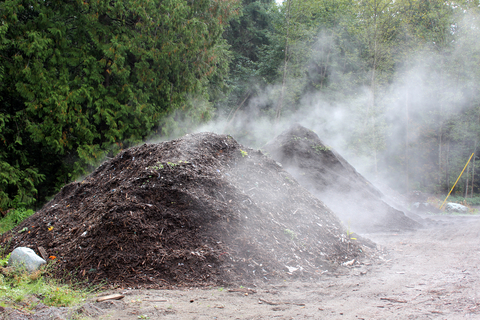
Uncomposted animal manures have a higher proportion of immediately available nutrients, like nitrogen (as ammonium), phosphorus, potassium and micronutrients than composted materials. Consequently, the plant production benefits of compost may not be as be apparent until several years after application, but can significantly help with increasing organic matter in short-term.
Composting is the biological decomposition of organic materials by micro-organisms under controlled, aerobic conditions to a relatively stable humus-like material called compost. Composting may be done successfully in numerous ways using a variety of materials, methods, equipment and scales of operation.
For agricultural operations, the common materials or feedstocks that are composted are livestock manures and bedding, and various residual plant materials (straw, garden clippings, on-farm processing wastes, and so on). Compost is a valuable source of organic matter for soils and contains nutrients that are slowly available for plant growth.
Like every production process, the quality of your compost largely depends on the quality of the organic materials you start with. If it is done properly, the high temperatures of the composting process can sterilise weed seeds and pathogens that may be present in the raw organic materials. On-farm-based composting can be done relatively cheaply if the right equipment is available or you can design passive composting systems that require minimal human input.
Summary
In this article, we only provided a few management practices you could implement on your property to improve the overall health of your soils and, ultimately, your pasture plants. Some of these we have discussed in more detail in previous articles. It is important to acknowledge each farm will have its own soil profile and soil/pasture problems that may require a different solution due to limitations, such as climate.
The strategies we may adopt will also largely depend on the available time we have to develop our soils/pastures, or available budget for soil improvement. So, keep learning about soil and, where possible, consult with soil scientists and pasture consultants who can take you in the right direction for your property.
The most important take-home message when it comes to pasture and soil development is we should prioritise repairing soils’ healthy food web! When practicing pasture management, it’s not the plants that are replenished, but the soil, through the process of breaking down organic matter with the help of soil micro-organisms!
It is our great duty to shepherd the basic building blocks of soil, bacteria and fungi, so the higher predators (nematodes, micro-arthropods and earthworms) can take part in this soil-food-web connection. These beneficial interactions produce plant-available nutrients, which create conditions for optimal photosynthesis to occur.
When the food web is strong, the plants are strong, which helps with pest and disease resistance and, with richer soils and diversity of plants, we can outcompete weeds. When we eliminate the need for pesticides because we have used diversity, we improve the hydrological cycle, and bio-diversity flourishes above and below the soil surface. As the plants build in complexity and diversity, they become carbon cyclers through root exudates, and they deliver carbohydrates to the root zones that micro-organisms use and exchange for nutrients the plants require (a symbiosis relationship).
The growth and decay process are a continual flux of energy – mixing the energies of the sun’s light and heat with the Earth’s minerals and nutrients, and the force that connects them: water. Water feeds and loosens the paths of soil micro-organisms, and is perspired out plants to help bring more rain. It’s stored extensively in the soil, in the plants and is all around us in varying states of composition. There is no separation between soil, water and vegetation!
However, it is not to say we cannot help nature along the way, and correct and speed up fundamental processes, so we can benefit quicker from richer soils, and greater pasture diversity and cover. Using tools and ingredients (including those imported onto the farm) to facilitate this are all part of the overall management plan, and go hand in hand with your horse management to maintain pasture availability and avoiding over-grazing.
DIY soil tests, including observational analysis, as well as soil lab testing, play an important role in monitoring the progression of your soil development and pasture management, and allow you to adjust your inputs or management practices! So, keep this ‘All About Soil’ series as reference and start soil building!
This article was published in the Horses and People Magazine June 2018
By Mariette van den Berg, PhD, BAppSc (Hons), RAnNutr
Mariette has a PhD in Equine Nutrition and Foraging Behaviour, is a RAnNutr equine nutritionist, a Certified Permaculture Designer and a dressage rider. She is the founder of MB Equine Services.

